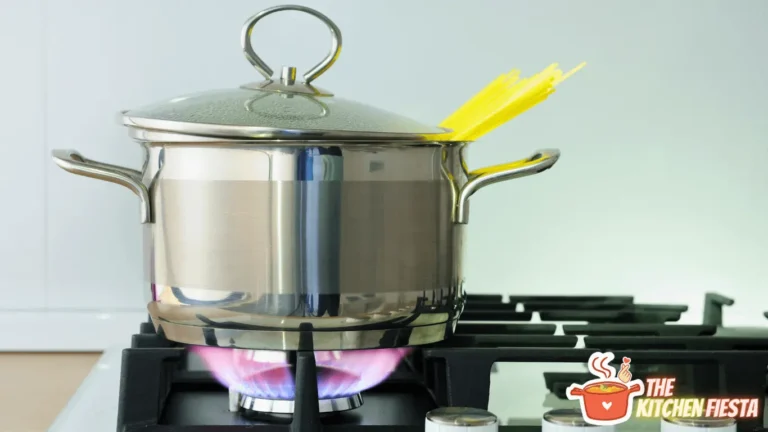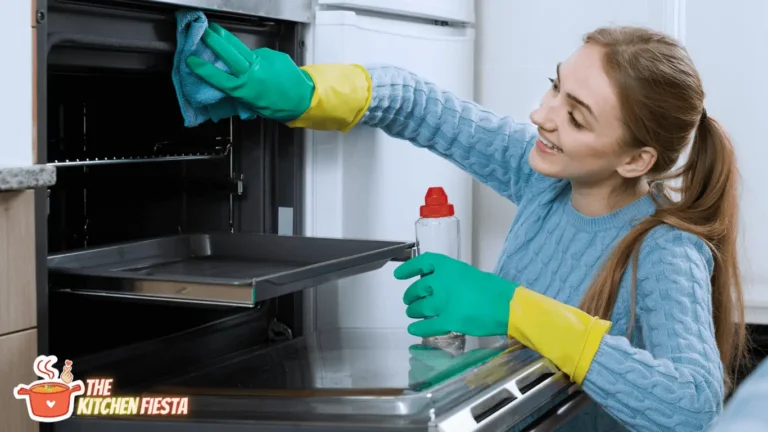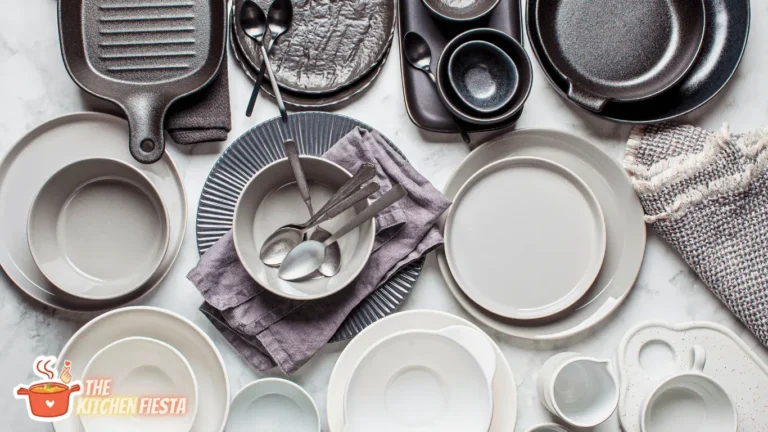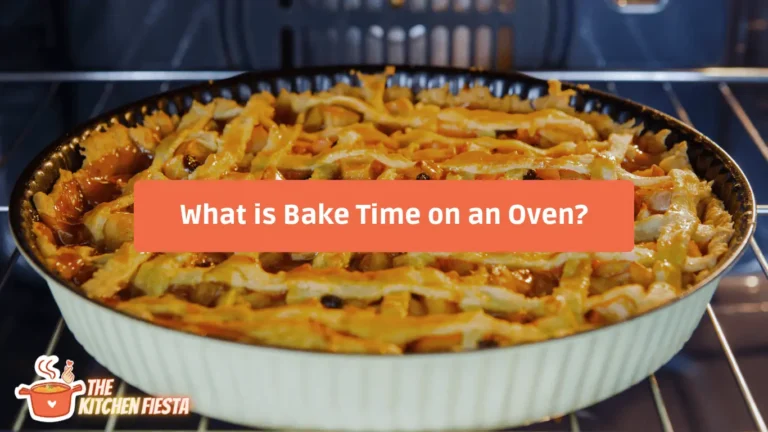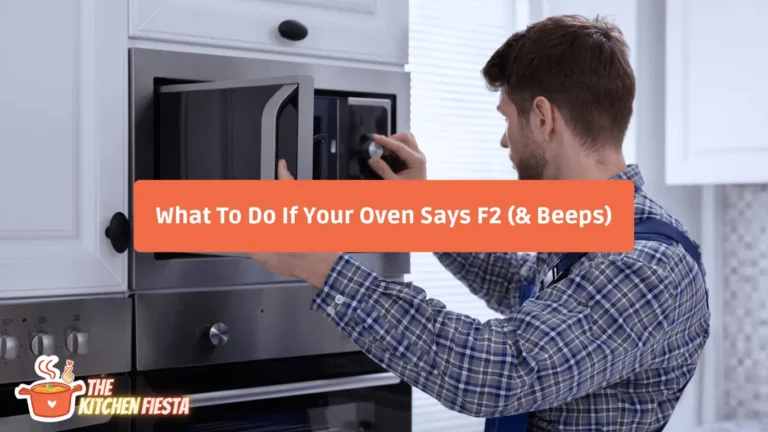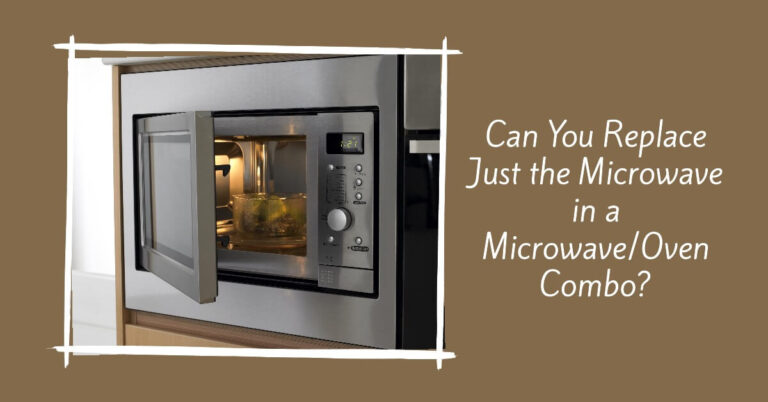Are Your Microwave-Safe Bowls Also Oven-Safe?
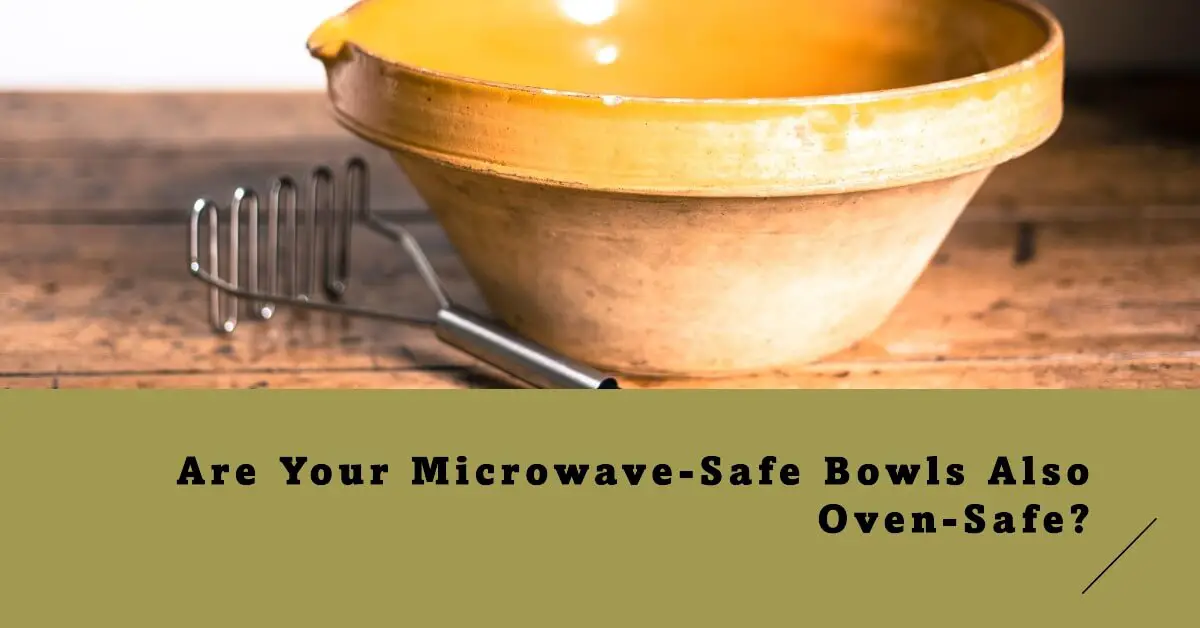
Cooking often involves using both the microwave and oven to prepare meals. But are the bowls and containers you use in the microwave also safe to use in the regular oven?
The short answer: Not necessarily.
While some bowls are labeled as both microwave and oven-safe, others are designed for microwave use only. The material a bowl is made from is the determining factor. Ceramic, glass, and some high heat plastics can withstand oven temperatures, but lower-quality plastics and materials like wax paper or ziploc bags will melt under high oven heat.
In this comprehensive guide, we’ll cover everything you need to know about using your microwave-safe bowls in the oven. You’ll learn:
- The definitions of microwave-safe and oven-safe cookware
- How to determine if a bowl is suitable for oven use
- Which materials like ceramic, glass, and plastic can or cannot withstand oven cooking
- Pro tips for identifying multi-use containers safe for both appliances
- The potential risks of using microwave-only bowls in an oven
Let’s dive in!
What Does “Microwave Safe” Mean?
When shopping for food storage containers and bowls, you’ll often see the label “microwave safe.” This means the product is designed to be safely used for cooking in the microwave oven.
Specifically, microwave-safe bowls:
- Are made from a material that can withstand microwave oven use without melting or releasing chemicals
- Won’t get dangerously hot when microwaved
- Won’t spark or cause other safety issues in the microwave
Most microwave-safe bowls are made from non-metal materials such as glass, ceramic, high-heat plastics, or paper products. These materials don’t react negatively when exposed to microwave energy.
Being microwave-safe doesn’t automatically make a bowl also oven-safe. The key is understanding how the material reacts under prolonged high oven heat versus brief microwaving. Next we’ll look at what exactly “oven-safe” means.
What Does “Oven Safe” Mean?
An “oven-safe” label on cookware means it’s designed to withstand the high air temperatures inside a regular kitchen oven or convection oven without damage.
Specifically, oven-safe materials for bowls and dishes must be able to:
- Resist warping, cracking, melting, or releasing chemicals when exposed to temperatures up to at least 400°F
- Maintain their shape and sturdiness through repeated oven cooking cycles
- Withstand methods like broiling, roasting, baking, etc.
Being safe at even higher oven temperatures would make a dish “ovenproof.” But most standard oven-safe materials are rated for continuous use up to 400-500°F.
Again, just because a bowl is labeled microwave-safe does not guarantee it’s also oven-safe. The material may not tolerate prolonged heat exposure over 250°F even if it can handle microwave cooking.
Next we’ll look at whether common microwave-safe bowl materials can also withstand oven cooking.
Are All Microwave-Safe Bowls Also Oven-Safe?
Whether a microwave-safe bowl is also oven-safe depends entirely on the type of material it’s made from. Some common materials like plastic and paper products are fine for microwave use but will melt or burn at oven temperatures.
On the other hand, materials like ceramic, glass, and some plastic polymers can withstand both the rapid heating of a microwave and the prolonged heat exposure in a kitchen oven.
Here’s a breakdown of whether popular microwave-safe bowl materials are also oven-safe:
Ceramic Bowls
Ceramic bowls labeled microwave-safe are almost always oven-safe too. The ceramic material is very durable and designed to resist damage or leaching chemicals when exposed to temperatures up to 500°F. Plain white ceramic plates and bowls are usually safe to transfer directly from the microwave into a 400°F oven after reheating.
Glass Bowls
Like ceramic, glass mixing bowls and baking dishes labeled microwave-safe can typically tolerate oven temps up to 500°F. The glass material won’t crack under rapid temperature changes. Clear glass baking dishes are handy choices for seamless use in both appliances.
Plastic Bowls
This is where things get tricky! Some plastic polymer materials are heat-resistant enough for both microwave and oven use, while lower-quality plastics will warp under oven temps as low as 250°F. Always check plastic container instructions for the oven-safe rating before attempting to use it in oven cooking.
Wax or Parchment Paper
Never put products like wax paper, parchment paper, or paper plates in the oven, even if labeled microwave-safe. The paper will burn at oven temperatures. Use a separate oven-safe dish instead.
Disposable Food Storage Bags
Plastic zip-top bags and plastic wrap can melt at oven temps. Again, use proper oven-rated containers. But you can use these disposables to cover oven dishes.
Metal Bowls
Most metal bowls reflect microwave energy instead of absorbing heat, making them unsafe for microwave use. But metals like stainless steel and cast iron are very oven-safe choices. Just don’t transfer them directly from the fridge or freezer into a hot oven, which can damage the metal.
The only way to know if a specific microwave-safe bowl is also oven-safe is to check the manufacturer instructions for an oven-safe rating. Let’s look at how to do that next.
How to Tell If a Microwave-Safe Bowl Is Also Oven-Safe
If a bowl or container doesn’t have a clear “oven-safe” label, here are some tips for determining if it can safely withstand oven use:
- Look for an oven-safe temperature rating: Reputable brands often provide the oven temperature the container is rated for, such as “Oven-safe up to 400°F”. As long as you keep oven cooking under that temp, the bowl should be fine.
- Consider the material: As discussed above, ceramic, glass, and some high-heat plastics can likely tolerate at least 400°F oven temps. Other materials cannot.
- Check the instructions: Thoroughly read the entire label, box, or instructions for any warnings against using it in the oven. If there’s no mention of oven use, that’s a red flag it may only be microwave-safe.
- Contact the manufacturer: If in doubt, directly contact the brand by phone or email to inquire if the specific product can be used in the oven. They should have the definitive answer for you.
Checking the label instructions and oven-safe rating is always the best first step. Let’s look closer at using common bowl materials like ceramic, glass, and plastic in the oven.
Can You Safely Use Ceramic Bowls in the Oven?
Plain white ceramic bowls that you use for microwave cooking are generally safe to transfer directly into a preheated 400°F oven after reheating food. Here’s some guidance on ceramic oven safety:
- Read the label first: Ceramic labeled as microwave-safe only may not tolerate oven temps. Double check for an oven-safe rating.
- Avoid rapid temp changes: Don’t put a ceramic bowl directly from the fridge into a hot oven, which risks cracking it. Allow it to adjust to room temp before baking.
- Watch the oven temp: Most quality ceramic is oven-safe to about 500°F. Higher temps can damage the material over time.
- Don’t broil: Ceramic dishes are usually not designed to withstand extremely high broiling temps. Use a broiler-safe pan instead.
With proper precautions, those versatile white ceramic bowls can pull double-duty for microwave and oven use. Just be sure to verify with the manufacturer first.
Is Glass Oven-Safe for Baking or Broiling?
Like ceramic, glass bakeware and mixing bowls often have a high oven-safe rating up to 500°F. The glass material won’t crack under the rapid temperature changes.
Here are some tips for safely using glass in oven cooking:
- Avoid drastic temperature changes: Don’t put cold glass bowls directly into a hot oven. Let it come to room temp first to prevent cracking from the sudden heat expansion.
- Check the lids: Glass lids may have a lower oven-safe rating than the baking dish itself. Remove lids before putting glass casserole dishes in the oven.
- Don’t broil: Most glass casserole dishes cannot withstand the intense direct heat of oven broiling. Use a broiler-safe pan instead.
With proper care, transparent glass bakeware allows you to seamlessly monitor food while cooking in either the microwave or oven.
Can You Put Plastic Microwave-Safe Bowls in the Oven?
This is the big question, and unfortunately the answer depends on the type of plastic. Some high-heat plastics are rated for both microwave and oven use, while lower-quality plastic will melt at oven temps.
Here’s what to know about plastic bowls and the oven:
- Check the oven-safe rating: The plastic must be designed high-heat material, not standard plastic. Carefully read label instructions.
- Look for a temp rating: Quality heat-resistant plastic will be rated for oven temps up to 400°F. Avoid any plastic without a temp rating.
- Don’t exceed the limit: Even high-heat plastic has a max oven temp threshold. Stay under that rating to be safe.
- No hot broiling: While plastic may bake or roast safely at 400°F, the direct high heat of broilers can damage it.
Bottom line is you should never put any plastic in the oven unless expressly stated safe up to the cooking temp on the label. To be cautious, keep plastic containers only for microwave use and use a separate oven-safe dish for baking.
Are Food Storage Containers Oven-Safe?
Reusable food containers vary widely in whether they can safely go in the oven. Some are rated for dual microwave-oven use, while others are microwave-only. Here are some tips:
- Check each container: Don’t assume a whole set is uniformly oven-safe. Lids in particular may have lower heat tolerance.
- Consider the material: High-heat plastic, silicone, glass, and ceramic containers are more likely to be dual oven-safe than ordinary plastic.
- Watch for warping: Lower-heat plastics may warp in shape under oven broiling or baking at temps above 250°F, even if they don’t melt.
Again, oven-safe ratings up to a specific temp must be clearly stated on the label. Don’t guess when it comes to plastic food containers in the oven!
Are Ziploc Bags Oven-Safe?
Never put plastic zip-top bags or plastic wrap in the oven! These disposable products are designed only to hold cold or room temperature foods. The thin plastic will melt rapidly when exposed to oven air over 200°F.
Instead, transfer food from bags into proper oven-safe bakeware. As a rule, do not cook any plastic directly in the oven unless it has a verified high-heat oven-safe rating. Play it safe by using glass, ceramic, or metal containers.
Can Metal Bowls Go In the Oven?
Metal mixing bowls are usually not microwave-safe due to potential for sparks. But metals like stainless steel and cast iron are very oven-safe, with temp thresholds around 500-600°F.
Just keep these tips in mind:
- Avoid thermal shock: Don’t put cold metal bowls directly into a hot oven, which can damage the material.
- Check for coatings: Some metal bowls have non-stick coatings rated for lower oven temps. Avoid metal utensils that may scratch these coatings.
- No aluminum foil: While metal bowls are oven-safe, foil is too thin and may overheat or react with acidic foods. Never cook directly on foil alone.
Thick,unfinished stainless steel and cast iron are very durable and oven-safe choices. Just be sure to bring them to room temp before placing in a hot oven.
Oven-Safe and Microwave-Safe Materials to Look For
To recap, the following materials can typically handle the high temps of normal oven cooking:
- Ceramic: Plain white plates, bowls, mugs, etc.
- Glass: Casserole dishes, baking dishes, mixing bowls.
- Silicone: Coated pans, muffin tins, container lids.
- Stoneware: Thick, durable ceramic cookware.
- Stainless steel: Mixing bowls, pots, pans, utensils.
- Cast iron: Skillets, pots, dutch ovens.
Any microwave-safe ceramic, glass, or high-heat plastic item should be verified oven-safe before attempting to use it. When in doubt, refer to manufacturer guidance or use separate containers for each appliance.
Potential Risks of Using Non Oven-Safe Bowls
Now that you know which materials can safely transfer from microwave to oven, let’s also look at the risks of using bowls that are microwave-safe only:
- Melting: Lower-heat plastics may completely melt or warp when exposed to oven air over 250°F. This can make a mess and possibly damage your oven.
- Chemical leaching: Some plastics and coatings weren’t designed to withstand oven temps. This could potentially leach chemicals into food.
- Sparks and fire: Foil and coated paper products can overheat, ignite, or spark in an oven’s high dry heat, creating a fire hazard.
- Damage: The thermal shock of rapid temp change can shatter glass or ceramic not properly oven-safe rated.
Don’t take risks by guessing if a material is oven-safe. When in doubt, refer to manufacturer guidance or simply use a clearly oven-rated dish instead.
The Takeaway: Verify Materials Before Using Bowls Interchangeably
The main rule of thumb is that you should never assume a microwave-safe bowl is automatically oven-safe too. Bowls must be specifically designed for each appliance based on their material composition.
Glass, ceramic, and some high-quality plastics can handle both rapid microwave heating and prolonged oven temps. But other materials like paper, standard plastic, and foil are suitable for microwave only.
Always check for a verified oven-safe rating before using any bowl or container in an oven. When uncertain, keep separate dishes for microwave versus oven use. This prevents potential damage and safety risks.
With the tips in this guide, you now have the knowledge to safely use your food storage containers and bowls interchangeably between the microwave and oven. Just be sure to verify the oven-safe rating first for hassle-free multi-purpose cooking!

